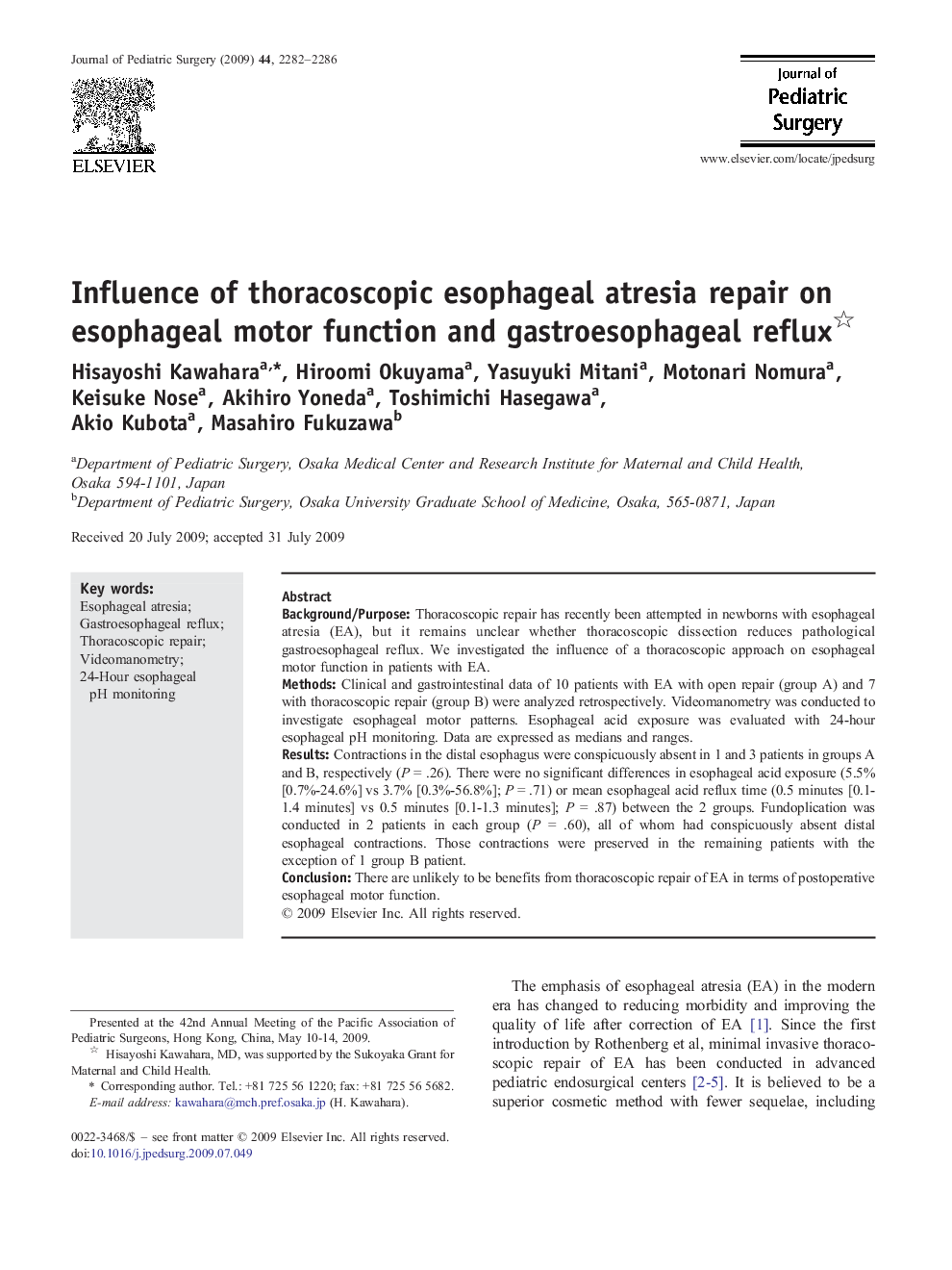| Article ID | Journal | Published Year | Pages | File Type |
|---|---|---|---|---|
| 4157816 | Journal of Pediatric Surgery | 2009 | 5 Pages |
Background/PurposeThoracoscopic repair has recently been attempted in newborns with esophageal atresia (EA), but it remains unclear whether thoracoscopic dissection reduces pathological gastroesophageal reflux. We investigated the influence of a thoracoscopic approach on esophageal motor function in patients with EA.MethodsClinical and gastrointestinal data of 10 patients with EA with open repair (group A) and 7 with thoracoscopic repair (group B) were analyzed retrospectively. Videomanometry was conducted to investigate esophageal motor patterns. Esophageal acid exposure was evaluated with 24-hour esophageal pH monitoring. Data are expressed as medians and ranges.ResultsContractions in the distal esophagus were conspicuously absent in 1 and 3 patients in groups A and B, respectively (P = .26). There were no significant differences in esophageal acid exposure (5.5% [0.7%-24.6%] vs 3.7% [0.3%-56.8%]; P = .71) or mean esophageal acid reflux time (0.5 minutes [0.1-1.4 minutes] vs 0.5 minutes [0.1-1.3 minutes]; P = .87) between the 2 groups. Fundoplication was conducted in 2 patients in each group (P = .60), all of whom had conspicuously absent distal esophageal contractions. Those contractions were preserved in the remaining patients with the exception of 1 group B patient.ConclusionThere are unlikely to be benefits from thoracoscopic repair of EA in terms of postoperative esophageal motor function.
